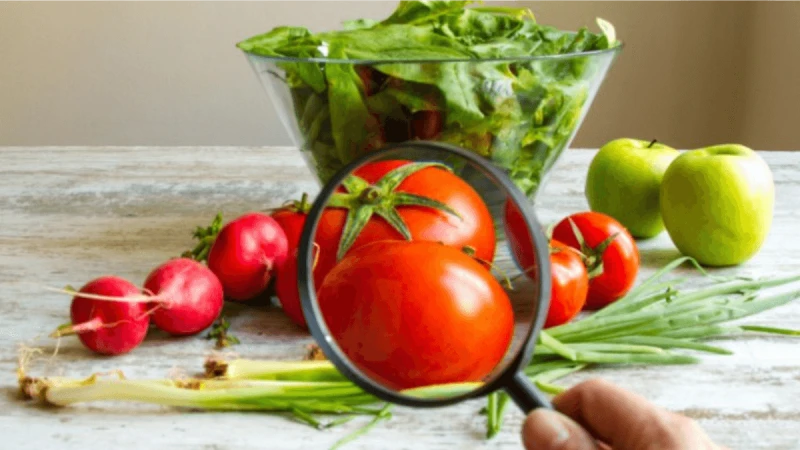99+% pesticide free: While activists claim chemicals soak our fruits and vegetables, USDA provides facts
99+% pesticide free: While activists claim chemicals soak our fruits and vegetables, USDA provides facts


So what are consumers missing? Here are a few key takeaways from the 231-page report:
- USDA prioritizes testing foods that are most commonly consumed by infants and children.
- Because PDP data are used for risk assessments, PDP laboratory methods are geared to detect very low levels of pesticide residues, even when those levels are well below the tolerances (safety levels) established by the Environmental Protection Agency (EPA).
- Over 99% of the foods sampled by USDA were well below safety limits set by the EPA with 40% having no detectable residues at all.
- In 2023, 9,832 samples were taken by the USDA program. Fresh and processed fruits and vegetables accounted for 98.2% of the samples. In total, [the] USDA program [personnel] conducted more than 2.8 million pesticide analyses.
- The publicly available PDP database is among the most comprehensive sources for pesticide residues in foods in the world.
The 2.8 million analyses illustrate how thorough the USDA program is. And yet…. every spring we must suffer through other groups’ manipulation of this data which somehow turns the very positive results from USDA into something negative and includes erroneous claims about produce safety. And, equally disturbing, media outlets that routinely ignore the USDA PDP report will cover the release of these outside groups’ manipulated data instead.
Each year, the Alliance for Food and Farming (AFF) works to provide the USDA PDP results to consumers and media along with other science-based produce safety information. That work is paying off with fewer and fewer media outlets covering the inaccurate safety claims about fruits and vegetables released by outside groups every spring.
We also share the USDA results with our network of nutritionists who are influencers on mainstream and social media and have a megaphone to consumers everywhere to reassure them about the safety of produce and the importance of eating more.
In today’s environment, misinformation about food safety and nutrition is prevalent making it sometimes challenging to find credible information. This is why the AFF partners with farmers, registered dietitians, and scientists from academia to provide consumers with fact-based content to help them choose what produce is affordable and accessible to them. And, when the government releases a comprehensive and important report about produce safety, we do our best to raise consumer awareness about it. Especially when others ignore it.
Read the original post here

 | Videos | More... |

Video: Nuclear energy will destroy us? Global warming is an existential threat? Chemicals are massacring bees? Donate to the Green Industrial Complex!
 | Bees & Pollinators | More... |

GLP podcast: Science journalism is a mess. Here’s how to fix it

Mosquito massacre: Can we safely tackle malaria with a CRISPR gene drive?

Are we facing an ‘Insect Apocalypse’ caused by ‘intensive, industrial’ farming and agricultural chemicals? The media say yes; Science says ‘no’
 | Infographics | More... |

Infographic: Global regulatory and health research agencies on whether glyphosate causes cancer
 | GMO FAQs | More... |

Why is there controversy over GMO foods but not GMO drugs?

How are GMOs labeled around the world?

How does genetic engineering differ from conventional breeding?
 | GLP Profiles | More... |

Alex Jones: Right-wing conspiracy theorist stokes fear of GMOs, pesticides to sell ‘health supplements’




 Viewpoint — Fact checking MAHA mythmakers: How wellness influencers and RFK, Jr. undermine American science and health
Viewpoint — Fact checking MAHA mythmakers: How wellness influencers and RFK, Jr. undermine American science and health Viewpoint: Video — Big Solar is gobbling up productive agricultural land and hurting farmers yet providing little energy or sustainabilty gains
Viewpoint: Video — Big Solar is gobbling up productive agricultural land and hurting farmers yet providing little energy or sustainabilty gains Fighting deforestation with CO2: Biotechnology breakthrough creates sustainable palm oil alternative for cosmetics
Fighting deforestation with CO2: Biotechnology breakthrough creates sustainable palm oil alternative for cosmetics Trust issues: What happens when therapists use ChatGPT?
Trust issues: What happens when therapists use ChatGPT? 30-year-old tomato line shows genetic resistance to devastating virus
30-year-old tomato line shows genetic resistance to devastating virus California, Washington, Oregon forge immunization alliance to safeguard vaccine access against federal undermining
California, Washington, Oregon forge immunization alliance to safeguard vaccine access against federal undermining The free-range chicken dilemma: Better for birds, but with substantial costs
The free-range chicken dilemma: Better for birds, but with substantial costs ‘You have to treat the brain first’: Rethinking chronic pain with Sanjay Gupta
‘You have to treat the brain first’: Rethinking chronic pain with Sanjay Gupta
